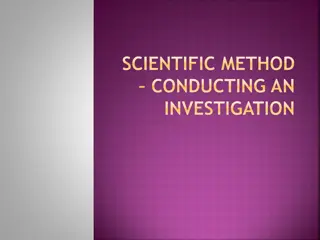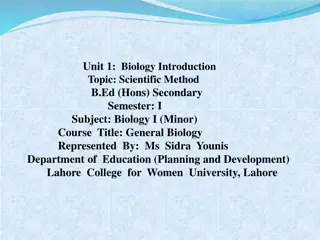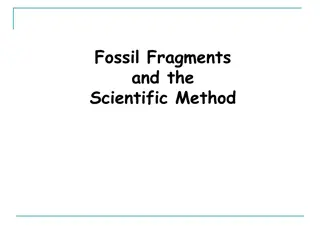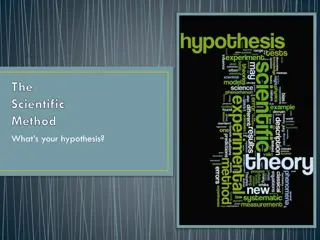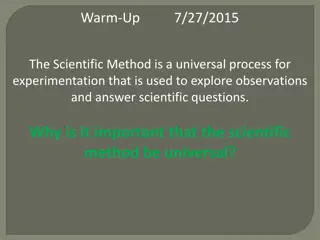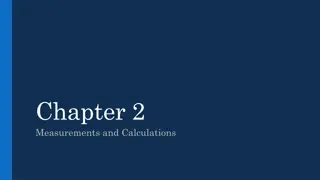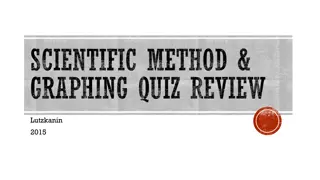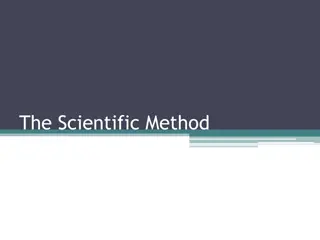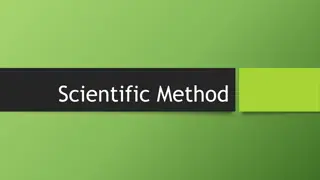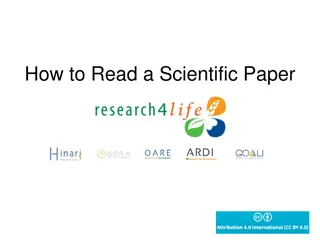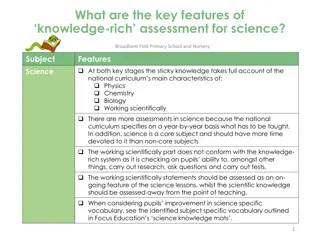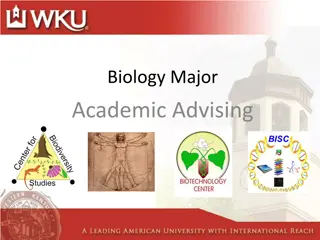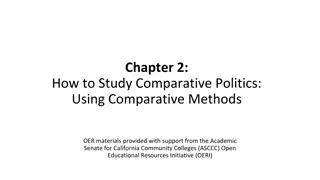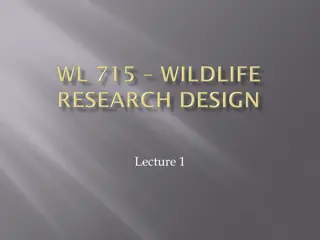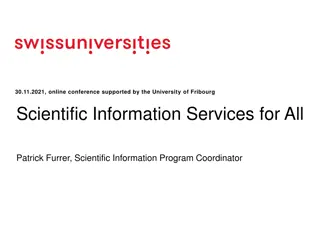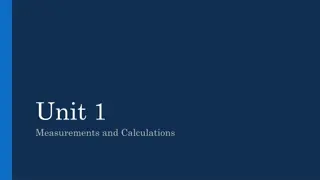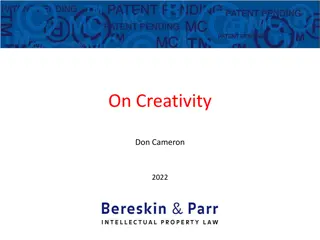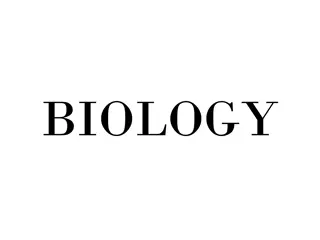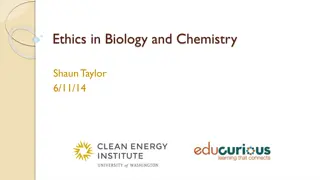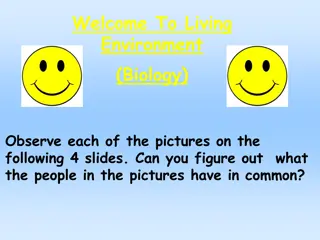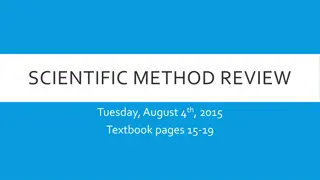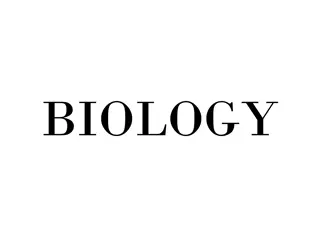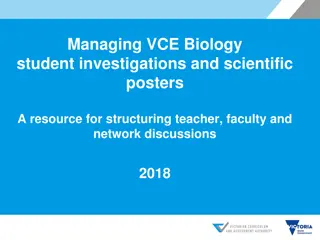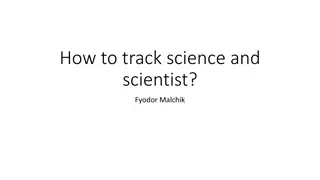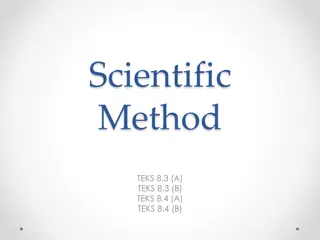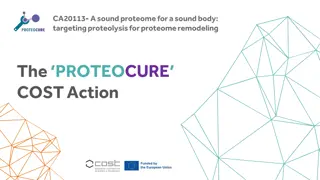Introduction to Biology: Exploring the Scientific Method
Explore the fundamentals of biology with Jennifer Naples through a direct instruction approach. Learn what biology is, dive into the scientific method, and understand how to formulate testable questions, gather information, create hypotheses, design experiments, and analyze results. Discover the steps involved in the scientific method and apply them to real-life scenarios to enhance your understanding of biological concepts.
Download Presentation

Please find below an Image/Link to download the presentation.
The content on the website is provided AS IS for your information and personal use only. It may not be sold, licensed, or shared on other websites without obtaining consent from the author. Download presentation by click this link. If you encounter any issues during the download, it is possible that the publisher has removed the file from their server.
E N D
Presentation Transcript
Introduction to Biology Jennifer Naples Direct Instruction Biology
What is Biology? Biology is the study of life Bio life Ology the study of something Biologists use the scientific method to study living things.
The Scientific Method The scientific method is a series of steps that are used to answer a question There are different views on the steps involved in The Scientific Method
The Scientific Method The steps of The Scientific Method: Form a question or state the problem Gather information Create a hypothesis Set up a controlled experiment Record and analyze results Draw conclusions
The Scientific Method Step 1 Ask a question or state the problem The question needs to be reasonable and testable. I am mot performing well on tests. If I eat breakfast in the morning will it help my test scores? Create your own testable question.
The Scientific Method Step 2 Gather Information Facts about dependent and independent variables Effects of lack of nutrition What can be done to improve test scores
The Scientific Method Step 3 Create a hypothesis A hypothesis is an educated guess, a statement that you think will be the conclusion to your experiment If I eat breakfast, my test scores will be higher. Create your own hypothesis for your question.
The Scientific Method Step 4 Create an experiment The experiment must be repeatable and include a manipulated variable and a responding variable Manipulated variable eating or not eating breakfast. This is the variable that you have control over Responding variable test scores. This variable changes in response to the manipulated variable.
The Scientific Method Step 5 Record and analyze your results Recording can be done on a chart or in sentence form. Analyzing results may include creating a graph I will create a chart that keeps record of my test scores when I eat breakfast and when I do not eat breakfast
The Scientific Method I will make a line graph which compares the results of test scores with breakfast and test scores without breakfast What will you do to record your data? How will you analyze your data?
The Scientific Method Step 6 Draw conclusions Conclusions are made based on results and analyzing data. When I eat breakfast, my test scores are higher. Breakfast helps to give your brain the fuel that it needs to function at its best.
The Scientific Method Activity You will need: 1 blank sheet of paper Pencils and colored pencils or markers Fold paper so there are 6 blocks. Create a cartoon using the steps of The Scientific Method. Create an imaginary question, hypothesis, experiment, results and conclusion. Put one step in each block.
Theory What is a theory? A unifying EXPLANATION for a broad range of hypothesis that have been supported by testing. Theories explain and predict. Big Bang Theory Evolution
Thoery https://www.youtube.com/watch?v=d80Lf76 Ht18
Law What is a law? A scientific summary of many experimental test results and observations. Tell you what happens Newtons laws Gravity
Theory VS. Law Check for understanding and practice Fold a piece of paper in half Cut on half of the paper down the middle Use one half for theories and one half for laws Give a definition and examples of each Draw a picture for each example
Characteristics of Living Things All living things share some common characteristics: They are all made up of cells They reproduce They are based on a universal genetic code They grow and develop They obtain and use materials and energy They respond to their environment They maintain a stable internal environment Taken as a group, they change over time
Branches of Biology Biology is the study of all living things Because there is such diversity in living things, there are many branches of biology Botany the study of plants Zoology the study of zoo animals Marine Biology The study of living organisms which live in and/or around water What is another branch of biology?
Tools and Procedures in Biology Scientists of all types from around the globe use the metric system as their system of measurement The metric system is based on units of 10 The newer revised version of the metric system is called the International System or SI.
Practice Problems How many centimeters are in a meter? 100 How many milligrams in a gram? 1000 How many milliliters in a liter? 1000
Microscopes Light Microscope Most commonly used Can magnify a specimen about 1000 times Compound light microscopes allow light to pass through a specimen Chemical stains are often used to show structures Fluorescent dyes are combined with video cameras and computers to create moving 3-D images
Compound Light Microscope Diagram
Compound Light Microscope Label the diagram:
Electron Microscope Use beams of electrons to produce images rather that light Up to 1000 times more detailed that a Compound Light Microscope Specimens must be dehydrated and preserved There are two types of Electron Microscopes TEM SEM
Transmission Electron Microscope Shines a beam of electrons through a specimen Can reveal detail inside a cell
Scanning Electron Microscope Scan a narrow beam of electrons back and forth across the surface of a specimen Produce realistic 3-D images of the surface of objects A parasite under an SEM microscope
Lab Techniques in Biology There are many techniques that biologists use to study cells Cell cultures Cell fractionation
Cell Cultures A single cell is placed into a dish with a nutrient solution where the cell can reproduce into a group of cells called a cell culture. Used to study cell responses under controlled conditions Used to study interactions between cells Used to select specific cells for further study.
Cell Fractionation Separates one part of the cell from the rest Cells are broken into pieces in a special blender Broken cell bits are added to a liquid and placed in a tube The tube is placed into a centrifuge which spins the tube Spinning separates the parts based on their mass and specific parts can be selected and studied
Check for Understanding What kind of microscope is used in biology class? Compound microscope What kind of microscope will create a 3-D image? Scanning Electron Microscope What technique would you use to look at the individual parts of a cell? Cell Fractionation






